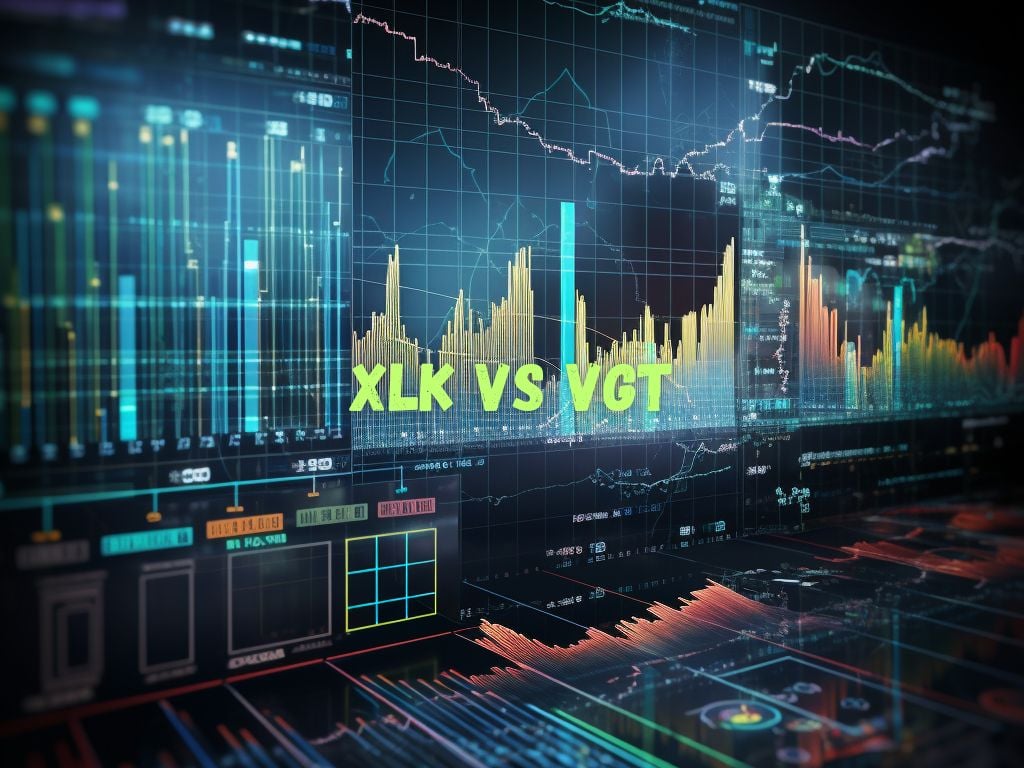Technology has become an essential part of our daily lives, and investing in this ever-growing sector can be lucrative.
However, with numerous investment options available, it can be overwhelming to decide which technology-focused ETF to invest in.
In this article, we will compare two popular technology ETFs, XLK and VGT, to help you make an informed investment decision.
XLK vs VGT: Key Differences
When considering technology ETFs, it is crucial to understand the key differences between XLK and VGT.
These differences can significantly impact your investment strategy. Here, we will delve deeper into the main factors that differentiate XLK and VGT.
Holdings and Composition
XLK (Technology Select Sector SPDR Fund) tracks the Technology Select Sector Index and mainly invests in technology companies within the S&P 500.
It includes well-known companies like Apple, Microsoft, and Facebook. The fund’s focus on these industry giants provides stability and reliability, as these companies have a proven track record of success.
However, being limited to S&P 500 technology stocks means XLK excludes many innovative technology companies that are not part of this index.
On the other hand, VGT (Vanguard Information Technology ETF) tracks the MSCI US Investable Market Information Technology 25/50 Index.
It has a broader scope and includes a wider range of technology companies, both within and outside of the S&P 500. This broader exposure allows VGT to capture emerging and smaller technology companies that show promise.
The inclusion of mid-cap and small-cap companies provides potential for higher growth, but it also increases the risk and volatility of the fund.

Performance
When evaluating XLK vs VGT in terms of performance, historical data is crucial. Over the past few years, XLK has shown consistent growth, reflecting the strong performance of leading technology companies in the S&P 500.
This stability and reliability can be attractive to investors seeking steady returns.
VGT has also delivered impressive returns, benefiting from its broader exposure to the technology sector. The inclusion of emerging companies and small-cap stocks provides VGT with more potential for higher growth.
However, investors should be aware that this broader exposure can also lead to increased volatility.
Expense Ratio
Expense ratio is a crucial factor to consider when investing in ETFs, as it directly affects your investment returns. XLK has an expense ratio of 0.13%, which is relatively low compared to many other technology-focused ETFs.
This low expense ratio makes XLK cost-effective for investors.
VGT, on the other hand, has a slightly lower expense ratio of 0.10%. Although the difference between the two may seem small, it can accumulate and impact long-term returns, especially for large investments.
Investors should weigh the expense ratio against the potential benefits and performance of the ETF to determine its worth.
Market Capitalization
Another significant difference between XLK and VGT lies in the market capitalization of the companies they invest in.
XLK primarily focuses on large-cap technology companies, given its association with the S&P 500 index. This focus on well-established industry leaders brings stability and long-term growth potential to the fund.
VGT, on the other hand, includes a mix of large-cap, mid-cap, and small-cap companies. This broader exposure allows investors to tap into the growth potential of emerging technology companies.
However, it also increases the risk and volatility of the fund. Investors should consider their risk tolerance and investment goals when deciding between the two.
Sector-Specific Risks:
Investing in technology ETFs like XLK and VGT comes with sector-specific risks. These risks can include regulatory changes, intense competition, and rapid technological advancements.
It is essential for investors to be aware of these risks and monitor the technology sector’s developments to make informed investment decisions.

Pros and Cons of Investing in XLK and VGT
Before investing in any ETF, it is essential to evaluate the pros and cons. Let’s take a closer look at the advantages and limitations of investing in XLK and VGT.
Pros of XLK
- XLK provides exposure to well-established technology giants, including Apple, Microsoft, and Intel.
- It has a lower expense ratio compared to many other technology-focused ETFs, making it cost-effective for investors.
- XLK’s focus on large-cap companies can provide stability and long-term growth potential.
Cons of XLK
- The narrow focus on the S&P 500 might limit diversification, as it excludes many innovative technology companies outside of this index.
- XLK’s performance is heavily dependent on the performance of the technology sector within the S&P 500.
Pros of VGT
- VGT offers broader exposure to the technology sector, including both large-cap and mid-cap companies, providing potential for higher growth.
- It has a lower expense ratio compared to many other technology ETFs, making it an attractive option for cost-conscious investors.
- VGT’s inclusion of mid-cap and small-cap companies allows for greater diversification and potential for higher returns.
Cons of VGT
- VGT’s broader exposure can expose investors to higher volatility and risk compared to XLK.
- It may not provide the same stability as XLK, as it includes companies with varying levels of financial stability and market presence.
Frequently Asked Questions
What are the historical returns of XLK and VGT?
XLK has consistently delivered strong returns, averaging around 20% annually over the past few years.
VGT has also shown impressive performance, with average annual returns of approximately 25% over the same period.
Are there any sector-specific risks associated with investing in XLK or VGT?
Yes, investing in technology ETFs like XLK and VGT involves exposure to sector-specific risks, such as regulatory changes, intense competition, and rapid technological advancements.
Which ETF is better for long-term growth?
Both XLK and VGT have demonstrated strong long-term growth potential.
However, VGT’s broader exposure to the technology sector may offer higher growth opportunities, albeit with a slightly higher risk.

Conclusion
In conclusion, choosing the right technology ETF for your investment needs requires careful consideration of various factors, including holdings, performance, expense ratios, and risk parameters.
XLK and VGT are both excellent options, each with its own set of advantages and limitations.
Investors seeking stability and exposure to well-established technology companies might lean toward XLK, while those seeking broader diversification and potential for higher growth may find VGT more appealing.
Ultimately, the decision between XLK and VGT will depend on your investment goals, risk tolerance, and preference for specific companies or market capitalization ranges.
By carefully evaluating these factors and considering the pros and cons of each ETF, you can make an informed decision that aligns with your investment strategy.
Remember, it’s crucial to conduct thorough research, consult with financial professionals if needed, and stay informed about market trends and developments to ensure the best possible investment decision when choosing between XLK vs VGT.


 Tags:
Tags:










